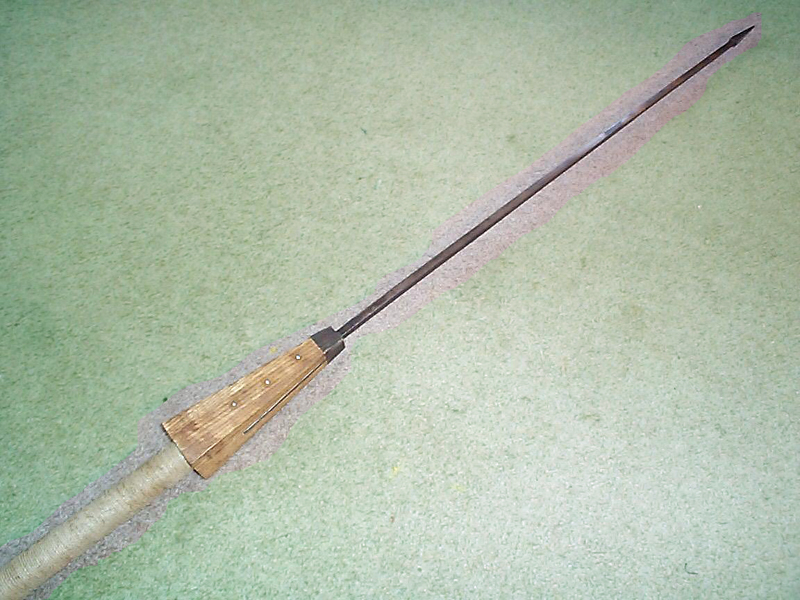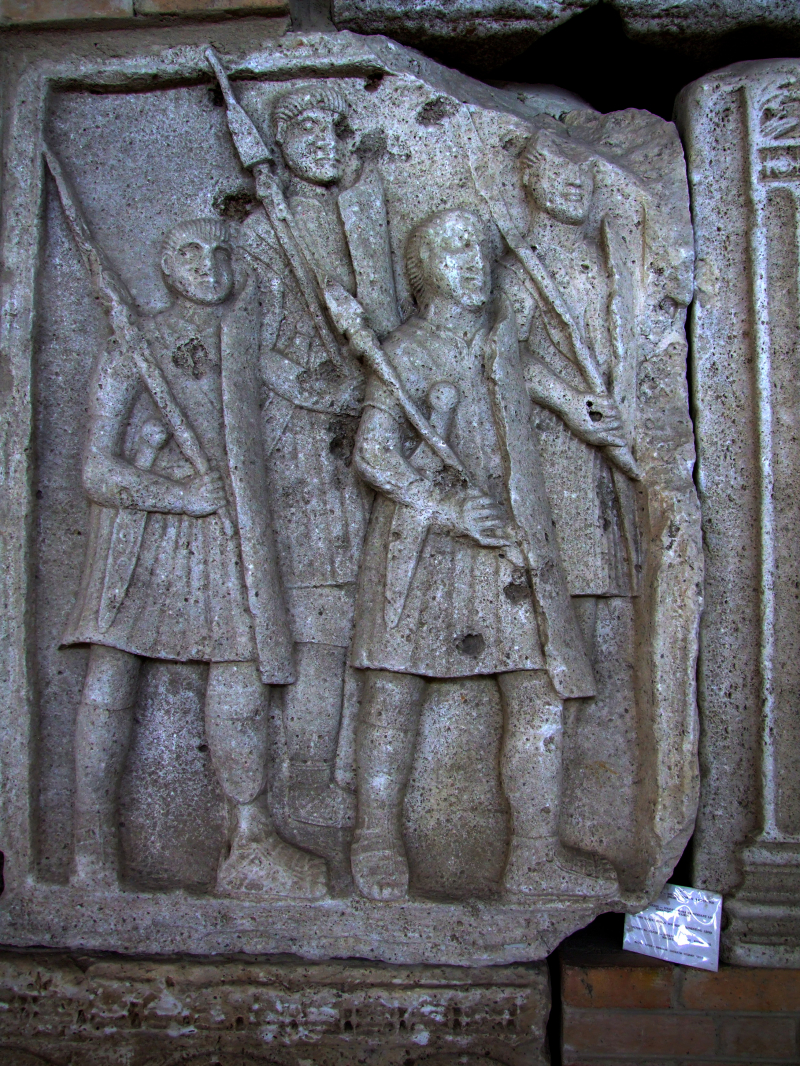Pilum

The Roman army often used the pilum (plural pila), a javelin, in ancient times. It had a pyramidal head with an iron shank that was 60 cm long and 7 mm in diameter. Its overall length was often around 2 meters. Either a socket or a flat tang connected the shank to the wooden shaft.
The two models of Pila are heavy and light. According to visual evidence, some versions of the weapon may have been weighted with a lead ball to boost penetrating strength, although no archaeological specimens of that design variant are known. Recent tests have revealed that pila have an effective range of up to 15-20 m and a range of about 33 meters. The tangs of the earliest known instances of the hefty pilum had a figure-eight shape with barbed heads.
Late-republican and early-imperial legions frequently carried two pila, with one being occasionally lighter than the other. Alexander Zhmodikov maintained that the Roman infantry could utilize pila at any point during the battle, contrary to standard tactics that required men to throw one of them (or both, if time permitted) at the enemy right before charging to engage with the gladius.
The pilum throw had the effect of dispersing the opponent formation through attrition and the appearance of breaches in any shield walls serving as protection. The pilum's point is made in such a way that, once lodged inside a shield, it is challenging to extricate; as a result, a shield that had been penetrated by a pilum became difficult to hold and was typically thrown away. Due to the previously indicated openings in the shield wall, the short gladius may then benefit from a close hand-to-hand mêlée.
Pila could also be used in hand-to-hand combat, as documented at the Siege of Alesia and again during Mark Antony's Parthian campaign. Pila could also be used as a thrusting tool and a barrier against cavalry charges. Some pila had small hand-guards to protect the wielder if he planned to use it as a melee weapon, but this does not appear to be common.











